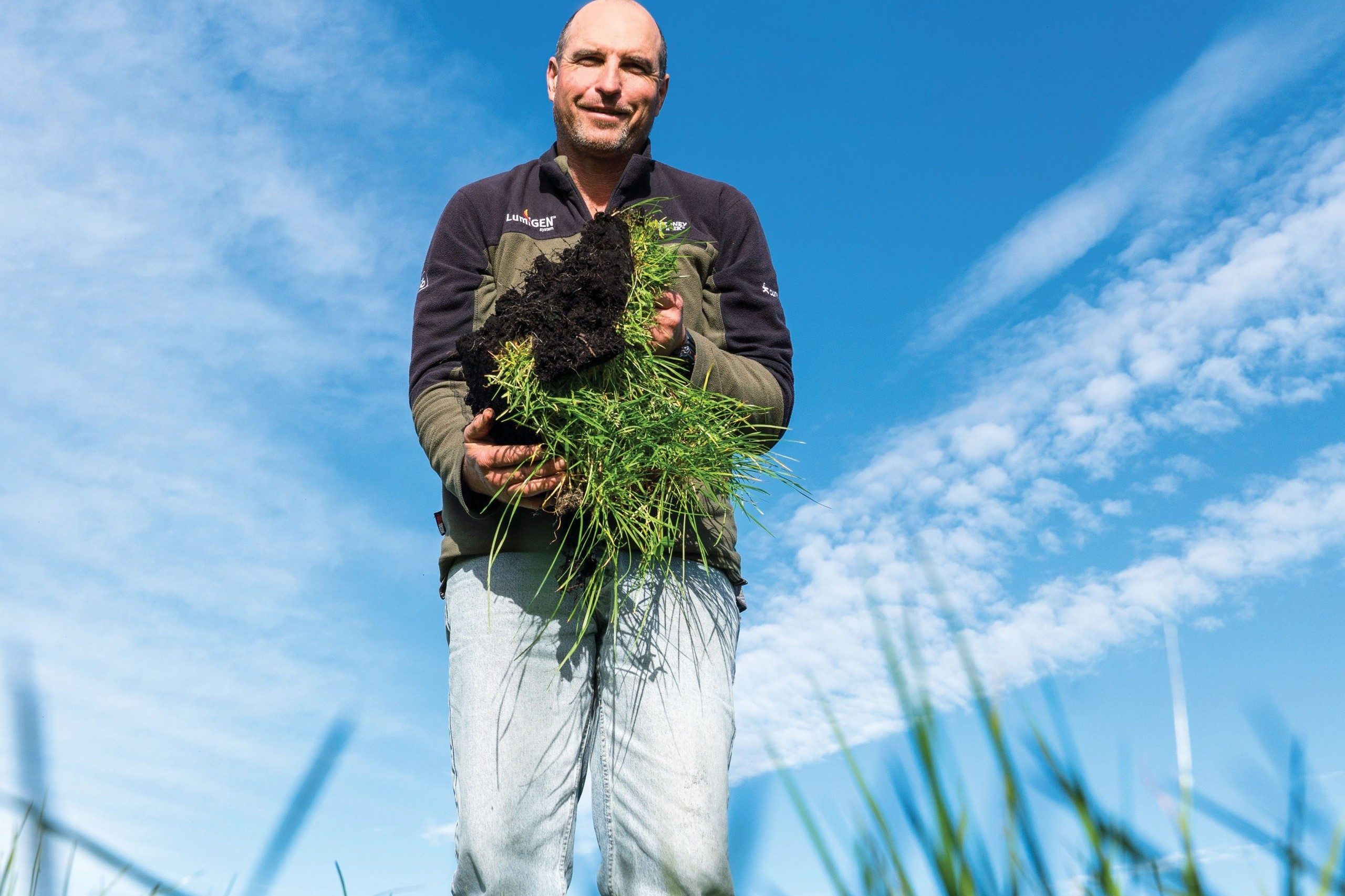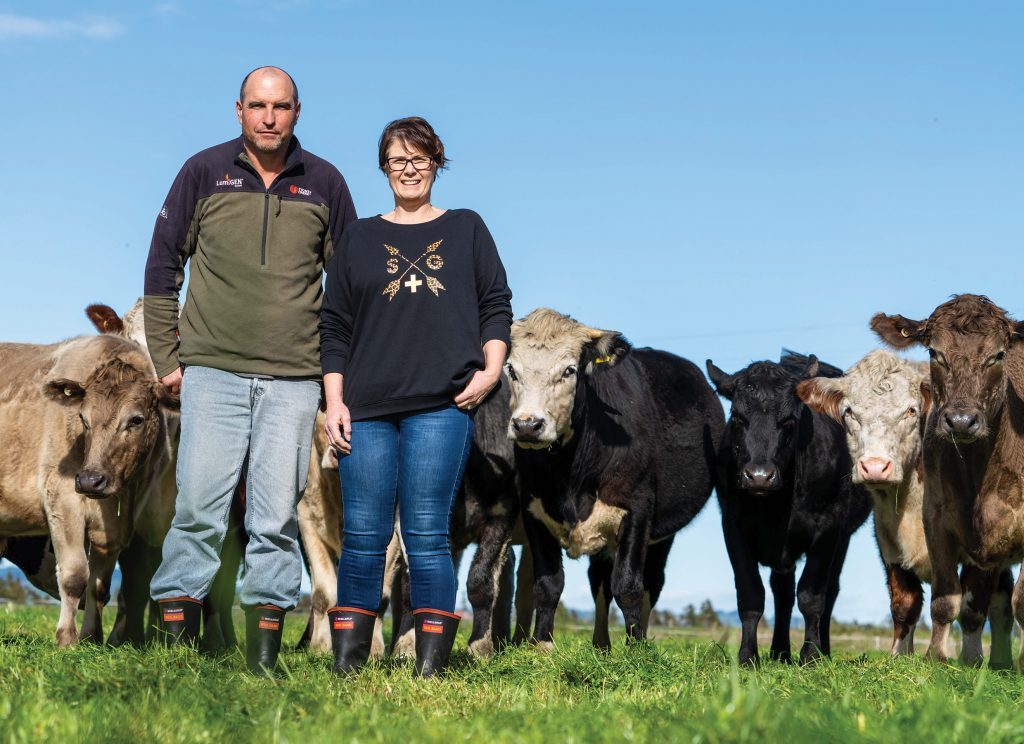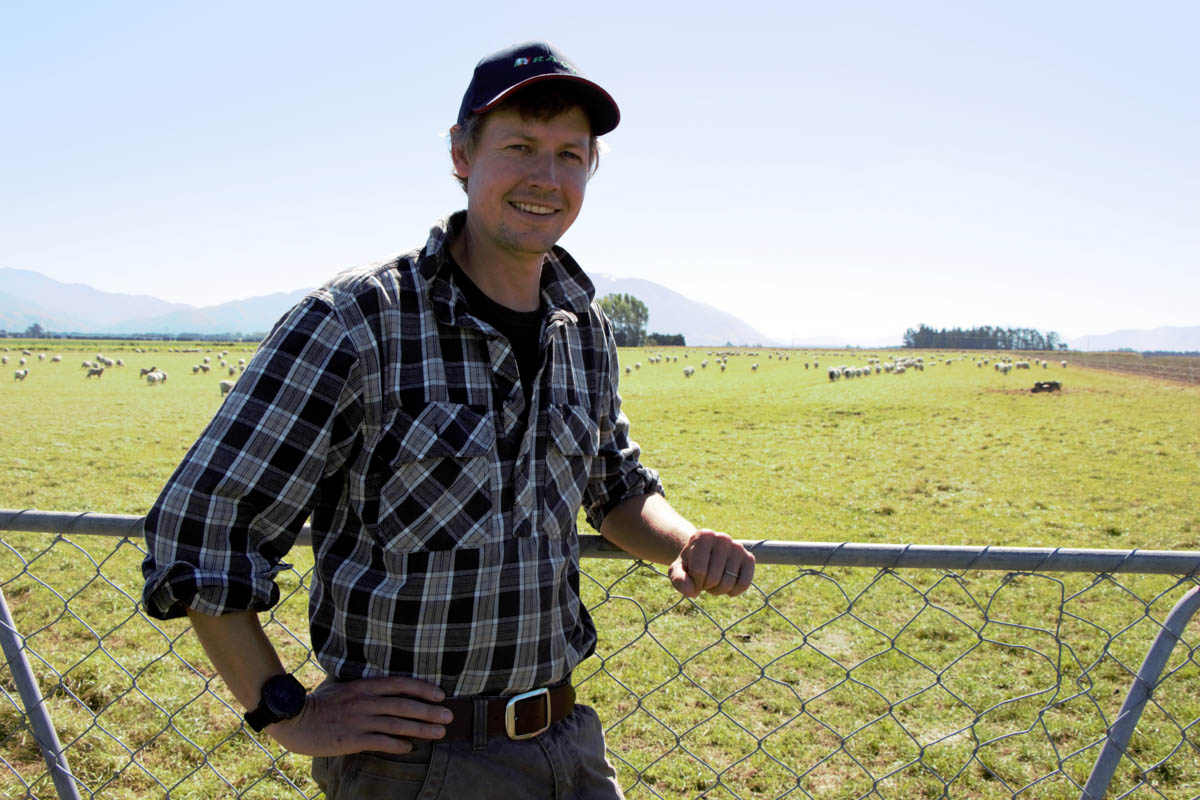The answers lie in the soil
Rocketing fertiliser prices has seen Waikato farmer Don Stobie reassess his soil nutrient requirements. By Glenys Christian.

Rocketing fertiliser prices has seen Waikato farmer Don Stobie reassess his soil nutrient requirements. By Glenys Christian.
Waikato maize grower Donald Stobie soil tested a month earlier than usual early this August to have more flexibility with fertiliser inputs.
“We usually just apply what the recommendations are.”
But with what he describes as “pretty brutal cost increases” based on projections of some nutrients jumping by up to 80%, he wanted the extra time to talk with his AgKnowledge rep about various products as well as whether application levels could be reduced on the 445ha farm at Gordonton.
“We probably could ‘mine’ some of the nutrients, but I’m wary of doing that because it could be costly to bring fertility levels back up again.”
His parents, Duncan and Lorraine, bought the original Gordonton farm of 200ha back in the 1970s, moving from a town milk supply dairy farm at Clevedon, south of Auckland. A large amount of development work was required to clear scattered scrub and bull rushes from the peat country, subdivide it and put in drainage before drystock could be run.

Over the years neighbouring blocks have been added to bring the farm up to 445ha. Today it is run as a family operation with Donald’s brother Craig and his parents.
Donald’s father started growing maize silage in 1996 to sell to local dairy farmers to feed their cows. What began as 20ha has now grown into 120ha maize silage and 80ha maize grain. Eleven years ago, when another piece of land was bought, it was decided to start to grow maize grain. There were several reasons for this decision, as the land needed quite a bit of development work, such as drainage, water reticulation being re-laid and all the fencing fixed.
He says the grain was a way of spreading the workload out through the year a bit more.
“In the early years we also used the grain as a way to lift soil fertility levels up because you are only removing the grain and returning the stover back to the soil.”
Now they’re happy with their fertility levels and the development of the farm, but have carried on growing maize grain because they feel it’s a good fit.
“Harvest time is the best part of the cropping season. You get to see all the hard work throughout the year, from soil testing, seed-bed preparation and good weed control pay off.”
Last year the grain blocks had an average pH of between 5.7 and 5.8 along with an Olsen P of 50. For the 120ha of maize silage the average pH is 5.5 and Olsen P 36.
Nutrients have been in balance since 2014 and since then it’s been a case of maintaining them. Most emphasis went on increasing potash levels which were low at about 2-3 moving up to present levels of 7-9.
The farm is divided into 22 different blocks for soil testing, which is carried out annually, with fertiliser levels remaining static for the last five to seven years. Last for the land where maize grain was grown, 250kg/ha of Cropzeal 20N was applied, 125kg/ha of DAP at planting and 250kg/ha of urea side dressed post-emergence. For the maize silage crops a special mix of 250kg/ha of muriate of potash and 500kg/ha of Cropzeal 16N was applied before planting. At planting 150kg/ha of DAP was applied and then 300kg/ha urea side dressed post-emergence.
All the machinery work for the maize crops is carried out by the Stobies apart from planting and harvesting which is carried out by local contractors Gavins.

Cyclone Dovi strikes
Crop yields for the maize silage average about 27-29 tonnes/ha but earlier this year Cyclone Dovi struck in the middle of February, a month before harvest, resulting in 30% of the crop blown down.
“It was looking like potentially our best crop ever until some of it was bent over at knee height,” he says.
While it was still able to be harvested, there was a 30% drop in yield. The grain crop, which usually harvests 14-15t/ha, only suffered a 10% drop in yield due to shorter-maturing varieties being grown as they were not carrying the weight and at a different growth stage than the maize silage.
Dovi also caused salt damage from wind blown off the Tasman Sea, sucking the moisture out of the crop and burning the maize leaves.
“It was a cyclone in the middle of a drought, and it wasn’t nice for us or the contractor.”
He regards it as a random, one-off event and says it will not change his thinking on what varieties to plant. But he keeps a close eye on any variety vulnerability to different weather patterns. Frost damage has occasionally occurred in the past in early spring which has meant parts of the crops have had to be replanted.
He favours Pioneer P1636 for maize silage and P0900 and P0937 for grain because of their drought tolerance, along with P0362.
Pioneer have conducted strip trials on the farm for the past 15 years and impact trials for the past seven years.
“It’s really good to see the data on varieties grown in your own environment,” he says.
“It shows up the varieties not to plant because they do not suit our soil or climate. And you can see the ones which show promise.”
It is not always about the highest yield, rather the reliability and consistency so there aren’t too many ups and downs in harvests from season to season.
“There are better traits coming through for drought tolerance. But some varieties run their course after five or six years. They just do not have the yield punch any more.”
Maize silage is usually harvested mid to late March, and maize grain mid to late April. Then the ground will be planted into a perennial grass mix of Excess ryegrass and several clovers. One third of the grain maize area is planted into the same permanent pasture while the other two thirds is planted into annuals such as Tama, or increasingly Winter Star and Hogan. Normally the biggest issue planting grass or cover crops straight after the grain harvest is incorporating the stover enough to get a good seed-to-soil contact for it to grow.
“We do this as soon as the combine has finished each block so we can maximise the growing days through winter.”
The amount of yield from cover crops behind grain varies year to year depending on the weather. The main reason is to have living root days through winter and into spring.
“So what does grow is just a bonus really.”

R2 steers bought in
About 800 rising-two-year-old steers are bought at various saleyards to be grazed through the winter and a further 200-300 dairy beef steers are bought in to finish on the spring growth when it gets away in August. Maize or grass silage isn’t fed if it’s not needed but they’ll have 100t of maize silage on hand in a stack and a further 50-100t of grass silage available.
“That’s usually ample to get us through. We are finding that although the last few summers have been long and very dry, the crops are still performing well and with timely decisions with stocking rates our farm seems to show very good resilience and has bounced back when the rains arrive.
“I think that shows if you have good fertility and well-farmed soils the crops and grass keep growing.”
The steers are sent to Greenlea for processing from October to February. They come on the farm at about 340kg liveweight (LW) and the aim is for a carcaseweight (CW) of 310kg a year later.
“We average about 0.7kg LW gain per day through the year.”
They also fatten from 5000 to 6000 lambs through the winter, depending on the season with 400-800 arriving each week.
“This year we started buying on May 18 and will finish killing the last week of September ready for the next season’s cropping to begin.”
The mostly male lambs, predominantly Romney-cross, are bought at an average of 33-35kg and reach about 50kg by the time they are sent to AFFCO.
While Donald will buy from local saleyards or in the paddock, he has a couple of agents he can rely on to buy from as far away as Stortford Lodge and Feilding. While a lot of farmers will cut surplus grass for silage, he believes grazing lambs is an effective way of returning fertility to the paddocks to fit in with maize plantings being rotated around the farm.
“There’s a little bit going on,” he says.
“There’s a McCormack stock truck here nearly every day some weeks.”
He sees plenty of challenges for the future, mainly relating to the “avalanche” of regulations coming at farmers from local and central governments. He presented a submission on Waikato Regional Council’s Healthy Rivers Plan Change One, but says he didn’t feel listened to.
“I don’t have a PhD after my name.”
Gross carbon number
While Overseer calculations initially showed 60-80 units of nitrogen/ha were being leached from the farm’s soils, with recent upgrades especially for maize rooting depth, that has dropped to 18.
He has worked out his gross carbon number under He Waka Eke Noa at 8.5 tonnes of carbon/ha, mostly generated by the livestock carried.
“…Reducing livestock numbers will be the only thing to do, to drop this down,” he says.
But he’s critical that little further detail is available, given the differences between finishing and breeding farming systems.
“They are making rules and regulations, but are not yet supplying any costing and details about what the real effect will be on farmers and the wider communities. Beef + Lamb and DairyNZ seem to agree with the Government all the time with no pushback.
“I don’t understand why they follow the Government ideology instead of saying, ‘no this is not what the science is telling us’. I sometimes wonder as farmers, if we’re not getting a real say for all the levies we are paying to these groups.
“If we crunch the numbers and run 20% less stock, we’ll still get all the bills, but we’re not going to make the income, so we’ve lost more than we’ve made.That’s the uncertainty of it.”
He feels their farming system with the mix of cropping and livestock, while keeping the fertility at optimum levels, not only gives different income streams, but is also a good fit for the biological makeup of the soil by having the integration of the two working together.
Farming and driving tractors
After finishing high school Donald completed several polytech courses and then worked on dairy farms for about three years. Then he started driving tractors for a local contractor, learning to drive a wide range of machinery.
He married Brenda in 2000 and started to split his time between the family farm and driving tractors when the contractor was busy.
To help build stock numbers to buy land they started rearing calves, buying dairy beef calves at four days old and farming them through to finish at two and a half years.
Although it was a fantastic way to maximise their gross margin between rearing and finishing stock, he says it was very time consuming rearing up to 500 calves a year.




